Antibiotic resistance is quite natural and bacteria evolve to avoid the effect antibiotics have on them. Antibiotic resistant bacterial infections are becoming more frequent among our pets, especially dogs, since these bacteria have become quite common in our environment .
Antibiotic resistant infections are caused by bacteria that no longer respond to commonly used antibiotics in dogs such as amoxicillin, penicillin, cefixime, cefpodoxime, ceftriaxone, azithromycin, doxycycline or clindamycin.
What are the Common Antibiotic Resistant Bacteria?
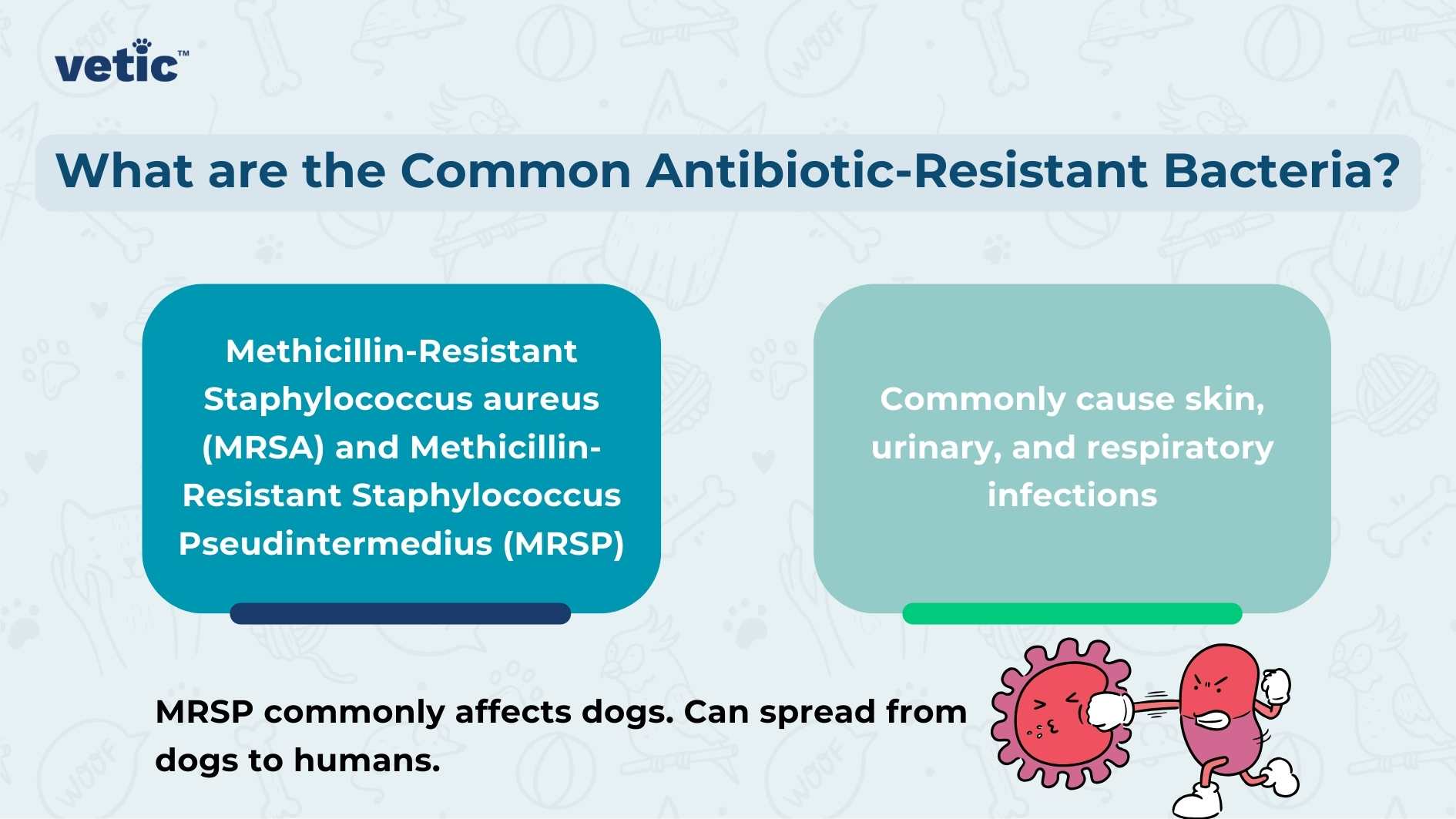
The two most common types of antibiotic resistant bacteria include Methicillin-Resistant Staphylococcus aureus (MRSA) and Methicillin Resistant Staphylococcus Pseudintermedius (MRSP). Both MRSA and MRSP can affect the dog population and humans can contract these antibiotic resistant bacterial infections from dogs.
These antibiotic resistant bacterial infections are stubborn and they sometimes require the use of rather toxic drugs. Antibiotic resistant infections can also be zoonotic, ie, it can spread from dogs to humans.
The most common antibiotic resistant bacterial infections affect the skin, urinary tract, gastrointestinal tract and respiratory tract.
Cause of Antibiotic Resistant Bacterial Infections
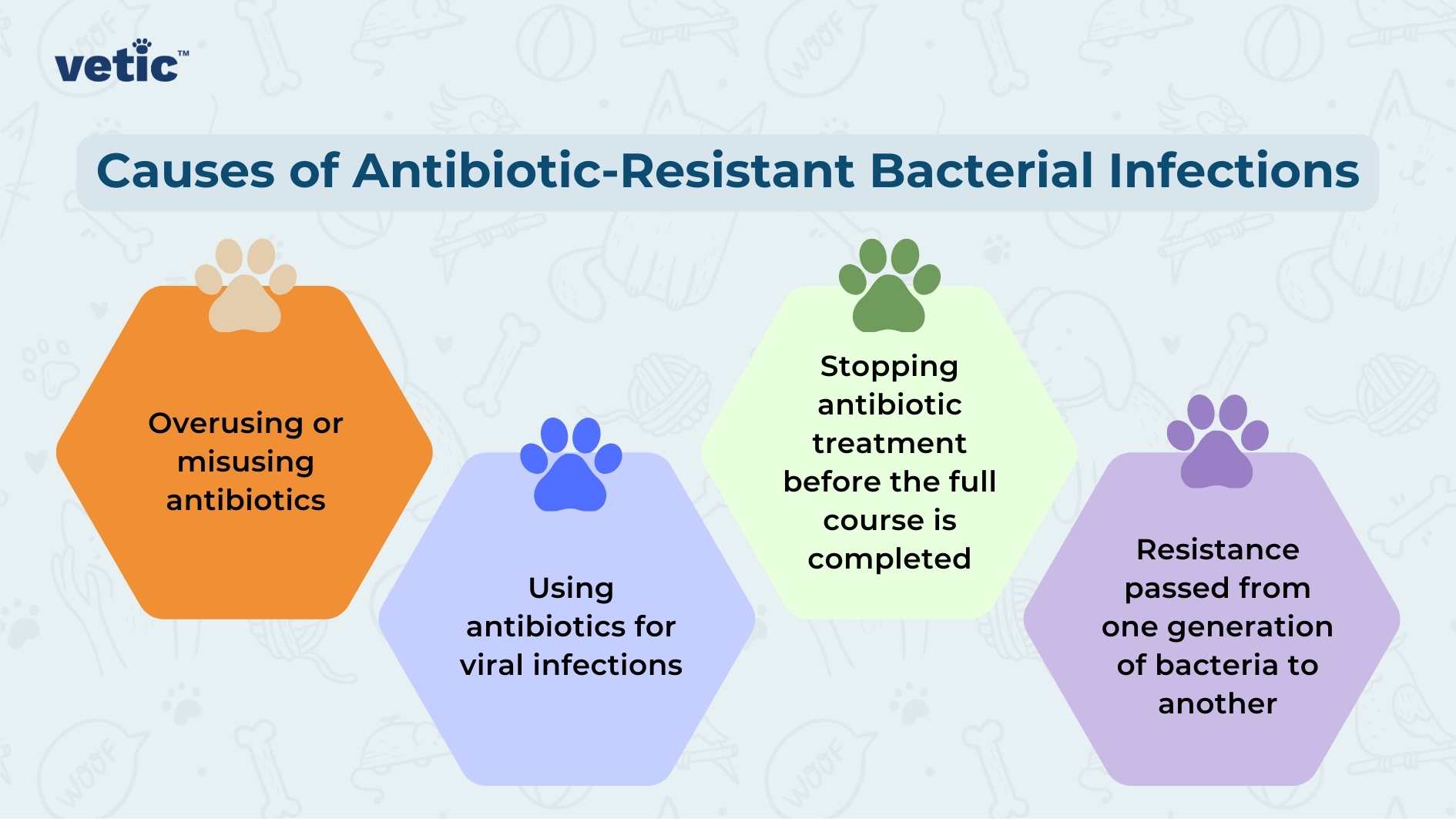
Antibiotic resistance develops naturally in bacteria as we keep using different types of antibiotics. However, the overuse or improper use of antibiotics can hasten the development of antibiotic resistance in bacteria.
One of the major contributors to antibiotic resistance in bacteria is the use or overuse of antibiotics during viral infections. Another major contributor is the sudden cessation of the use of antibiotics without completing the full course.
For example, we begin taking an antibiotic when we have an upset stomach. However, instead of completing the doctor-suggested antibiotic course we stop immediately when we feel better. And we do that frequently. That can cause the remaining bacteria to develop resistance to the antibiotic we are taking.
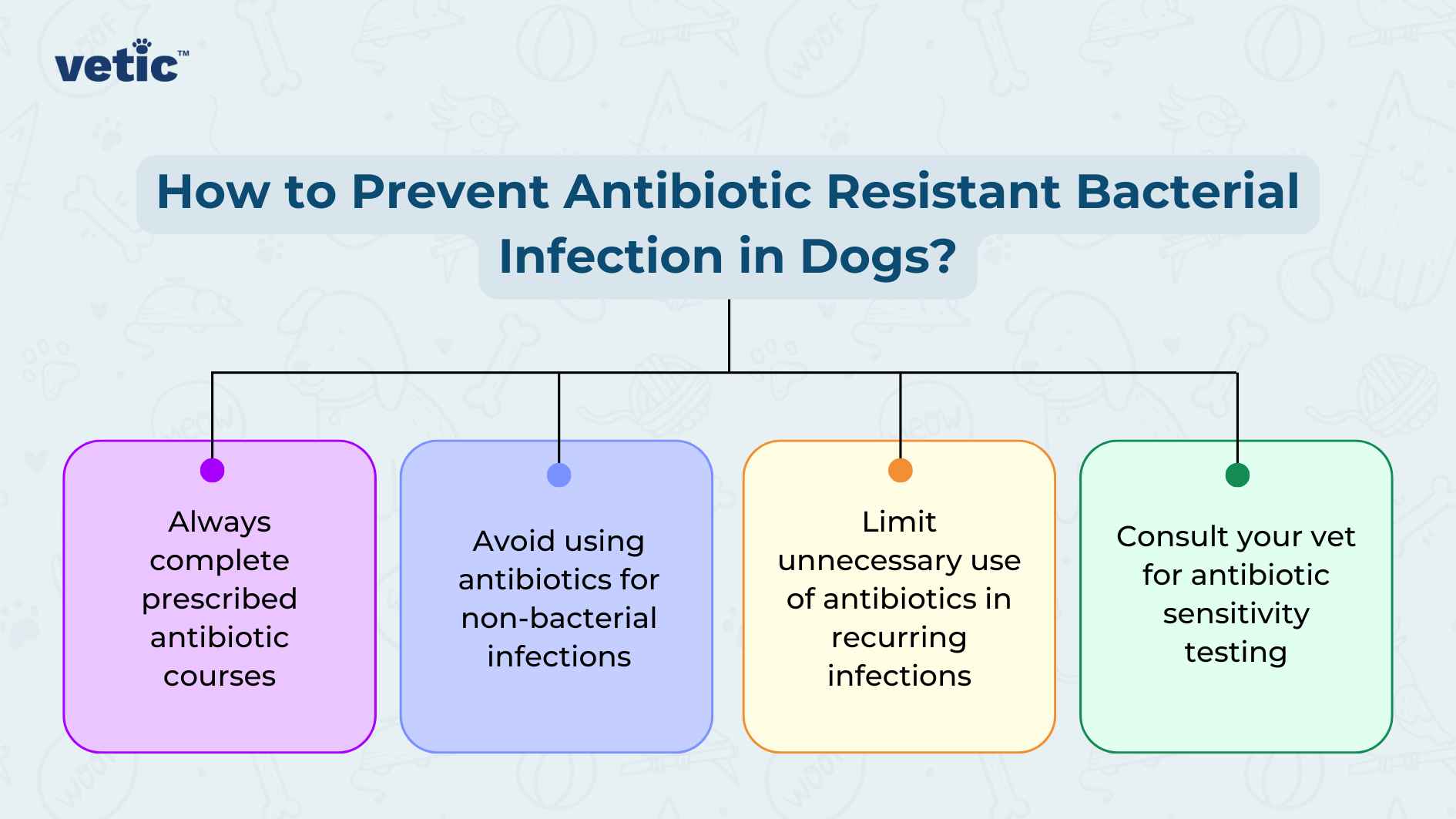
Bacteria develop resistance to frequently used antibiotics over time as a survival mechanism. Interestingly, this resistance can pass down from one generation of bacteria to another. So, if someone or some dog has one antibiotic resistant bacteria today, they might end up with the next entire generation of antibiotic resistant bacteria within just a couple of days.
Any dog who is frequently given antibiotics is at a high risk of developing antibiotic resistant infections. These can include dogs with atopic dermatitis, recurrent loose motions, recurring ear infections, staph infections (skin and URI), urinary tract infections (UTI) and Cushing’s disease.
How Will You Understand if Your Dog Has an Antibiotic Resistant Bacterial Infection?
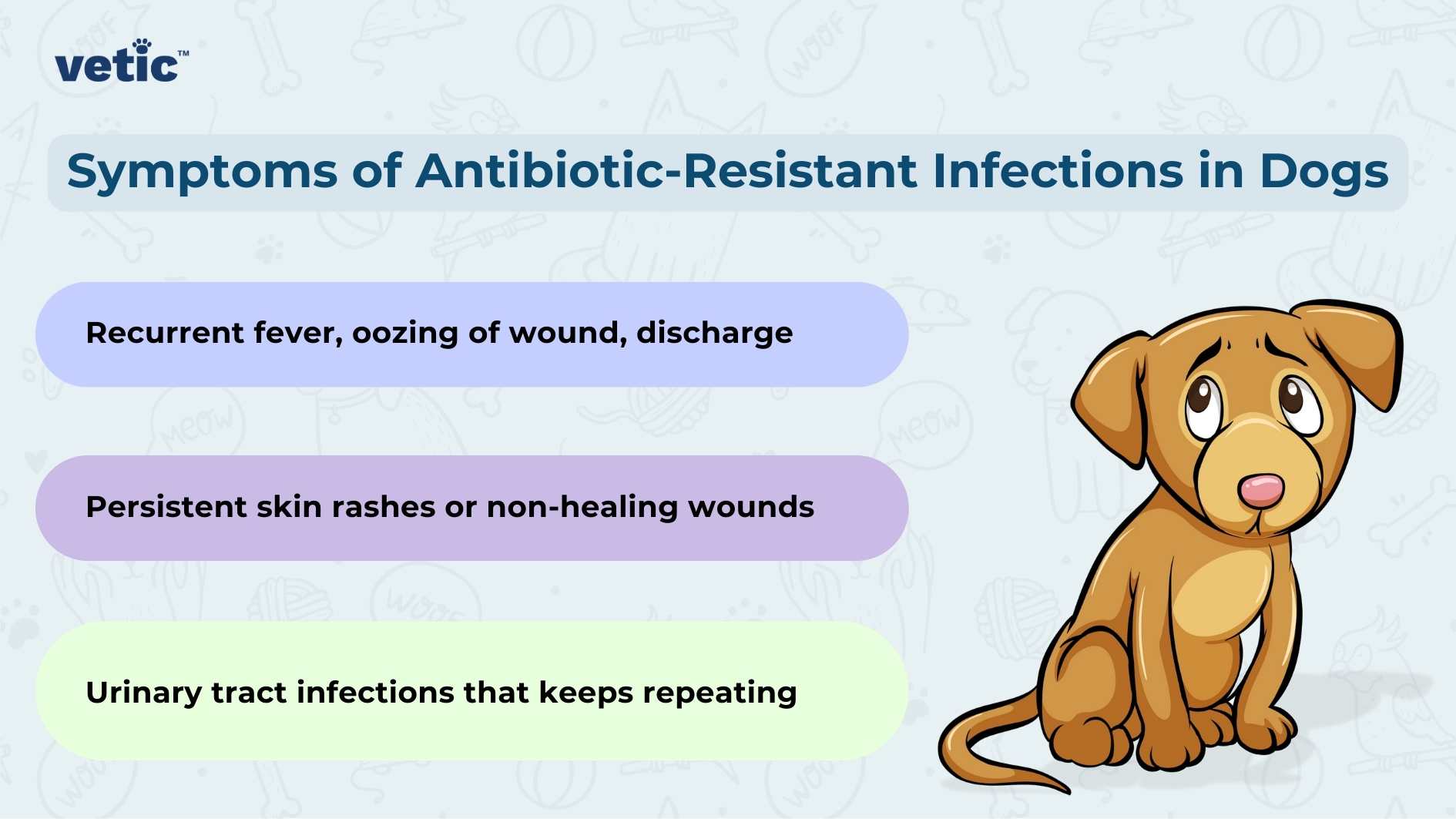
If your dog has a recurrent fever, rashes or a wound that is not responding to a conventional antibiotic therapy, you have reason to suspect an antibiotic resistant bacterial infection.
When unsure, speak to your veterinarian and try to get an antibiotic sensitivity test especially in the case of a skin infection or urinary tract infection.
What is The Treatment for Antibiotic Resistant Bacterial Infections?
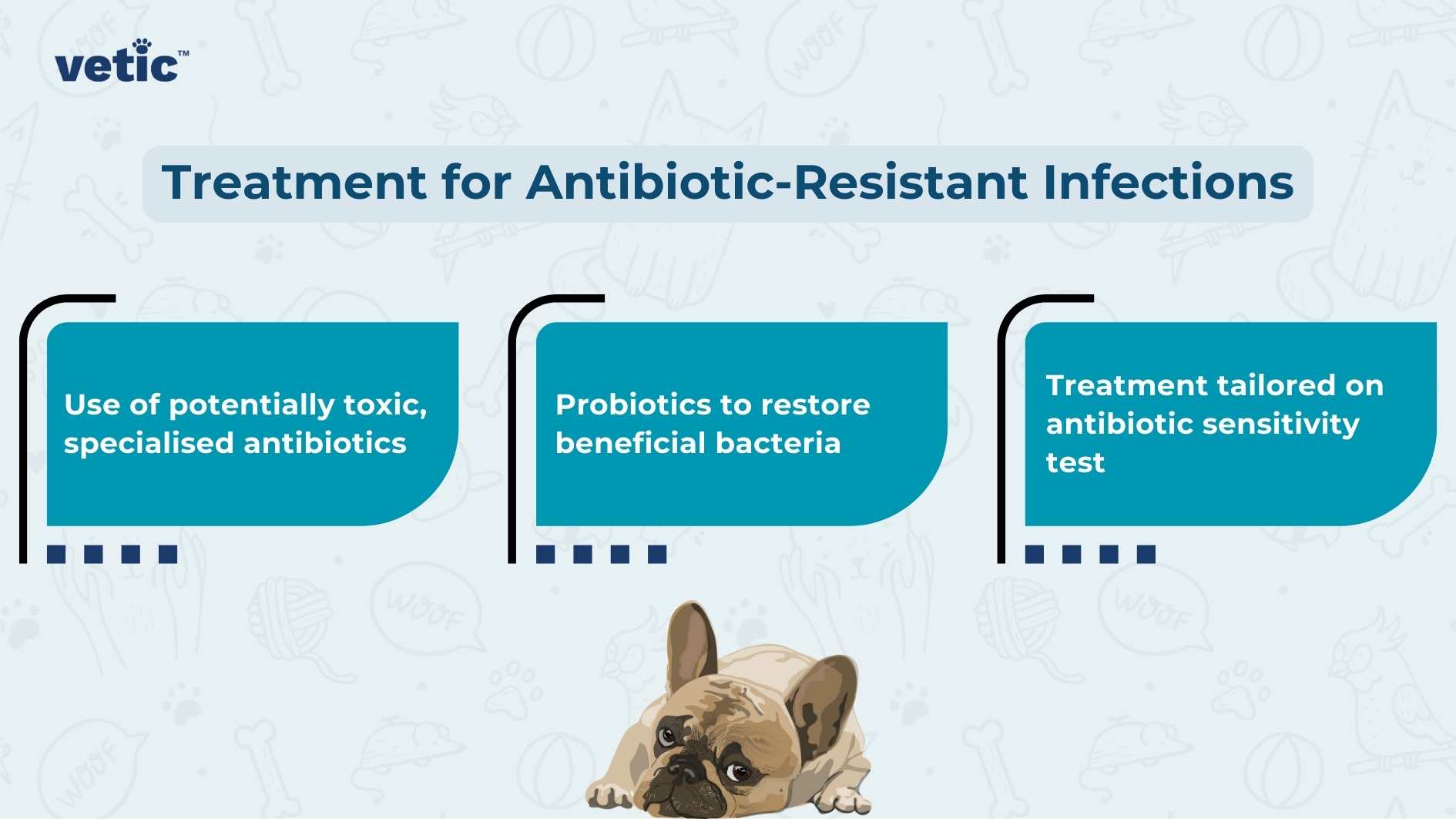
Antibiotic resistant bacterial infections often call for potentially-risky and sometimes toxic antibiotic treatments. These antibiotics are not commonly used for regular bacterial infections of the skin, urinary tract, ears or stomach.
The side effects of these antibiotics on dogs are sometimes severe. They can cause diarrhoea, nausea, vomiting, inappetence and rashes.
Some rare cases require supportive care and the treatment of any underlying condition that may have caused the infection without the use of these riskier antibiotics.
Moreover, probiotics are often recommended with these riskier antibiotics to re-introduce beneficial bacteria into your dog’s system. Studies show that probiotics have no health risks for dogs and they can be a part of any antibiotic regime.
Can Your Dog Recover from an Antibiotic Resistant Bacterial Infection?
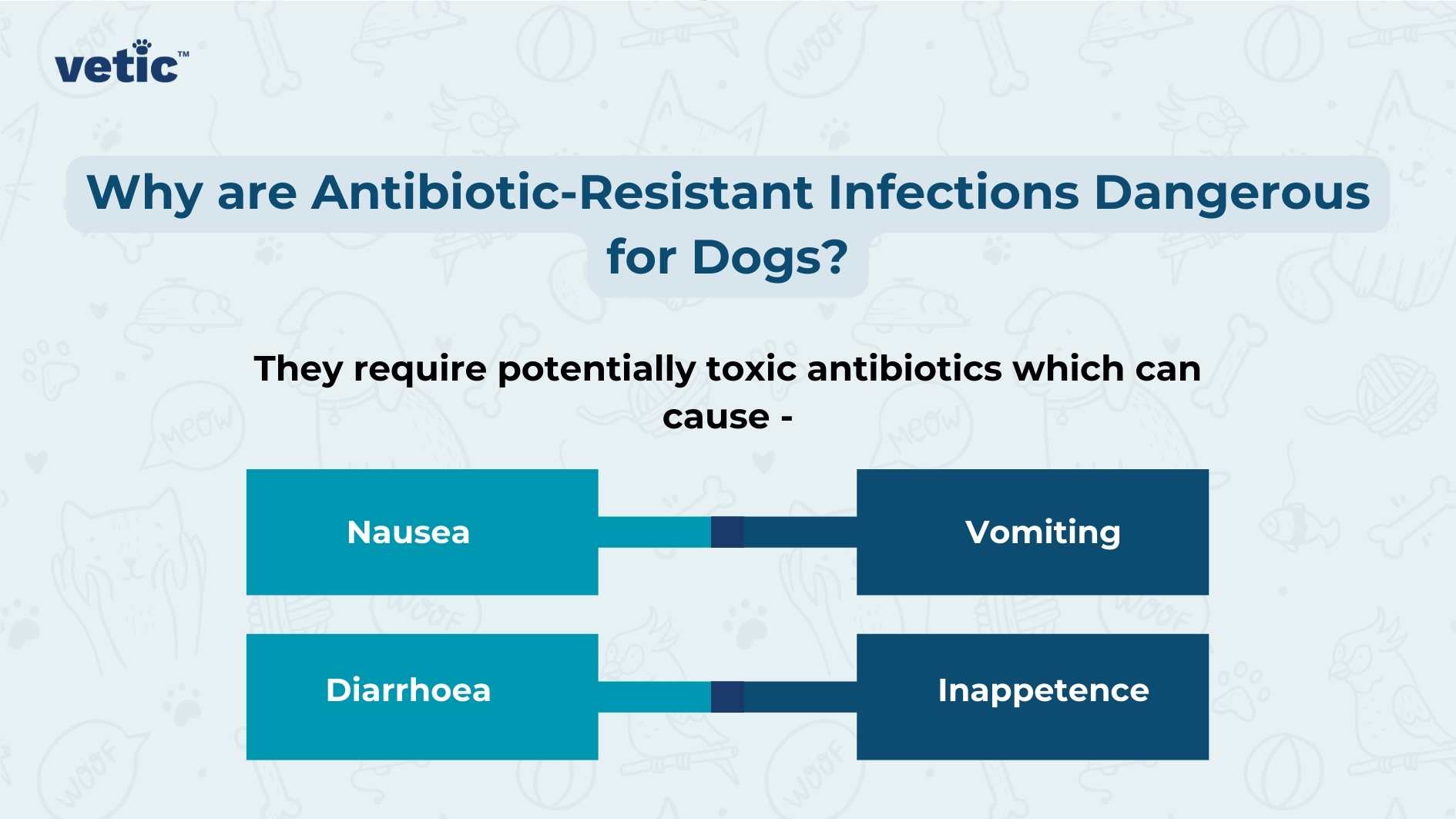
YES! It is possible for a dog to recover from an antibiotic resistant bacterial infection provided it has not caused septic shock.
However, the time your dog will take to recover will depend on the extent of the infection and the treatment plan created based on their antibiotic sensitivity test.
FAQs on Antibiotic Resistance in Dogs
What is an antibiotic-resistant bacterial infection in dogs?
It’s an infection caused by bacteria that no longer respond to commonly used antibiotics like penicillin or amoxicillin.
Which bacteria are commonly antibiotic-resistant?
Methicillin-Resistant Staphylococcus aureus (MRSA) and Methicillin-Resistant Staphylococcus Pseudintermedius (MRSP) are the most common antibiotic-resistant bacteria.
What causes antibiotic resistance in dogs?
Antibiotic resistance develops from overuse, improper use, or incomplete courses of antibiotics, allowing bacteria to adapt and survive.
How do dogs get antibiotic-resistant infections?
Dogs can contract resistant infections from frequent antibiotic use, especially for recurrent skin, urinary, or gastrointestinal issues.
What are common symptoms of antibiotic-resistant infections in dogs?
Symptoms include recurrent fever, skin rashes, or wounds that don’t improve with standard antibiotic treatment.
Can humans contract antibiotic-resistant infections from dogs?
Yes, antibiotic-resistant infections like MRSA can spread from dogs to humans, posing a zoonotic health risk.
How is an antibiotic-resistant infection diagnosed in dogs?
An antibiotic sensitivity test, often recommended for skin or urinary infections, can confirm antibiotic resistance in dogs.
What treatments are available for antibiotic-resistant infections in dogs?
Treatment may involve toxic or less common antibiotics, along with probiotics to support the dog’s recovery and gut health.
Can dogs recover from antibiotic-resistant infections?
Yes, dogs can recover if treated promptly, with recovery time depending on the infection’s severity and treatment.

